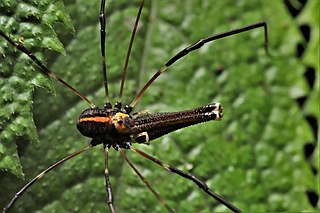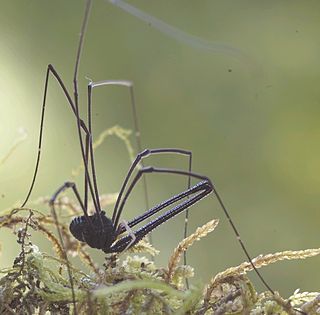 W
WForsteropsalis is a genus of harvestmen (Opiliones) endemic to New Zealand. Males of this genus have exaggerated chelicerae weapons used in male-male competition. Forsteropsalis are opportunistic omnivores that both capture live prey and scavenge dead animal matter. The diet includes various insects, arachnids, spiders, millipedes, amphipods, and annelid worms.
 W
WForsteropsalis pureora is a species of long-legged harvestman in the family Neopilionidae. This species is endemic to New Zealand, found in the North Island. They are found in native forest, often resting on vegetation or stream banks.
 W
WThe Monoscutidae are a family of harvestmen with 32 known species that all occur in or near Australia and New Zealand.
 W
WPantopsalis is a genus of eleven species of harvestman in the family Neopilionidae. They are all endemic to New Zealand. Males of some species are notable for their enlarged chelicerae.
 W
WPantopsalis albipalpis is a species of harvestman in the genus Pantopsalis. It was first described by Reginald Innes Pocock in a paper published in 1902. P. albipalpis cannot be distinguished from P. johnsi but P. johnsi has not been synonymised as these species each have a distinct distribution.
 W
WPantopsalis cheliferoides is a species of Neopilionid harvestmen. This species was originally described by William Colenso and is endemic to New Zealand.
 W
WPhalangium opilio is a species of harvestman belonging to the family Phalangiidae.